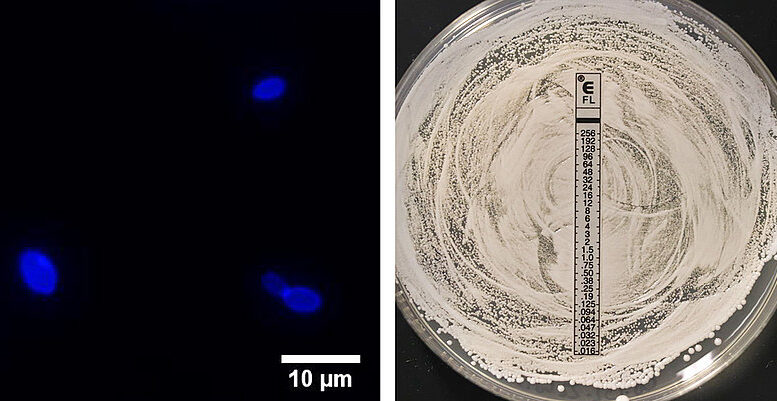Among the yeasts from the Candida genus that cause infections in humans, the species Candida auris is still relatively new: this species was only described in 2009, and to date no evidence has been found before the 1990s. It is unclear what ecological niche C. auris colonizes and why human infections have increased since around the turn of the millennium.
Treatment of C. auris infections is greatly complicated by the pathogen's potential to develop resistance to all available antifungal classes. In addition, unlike other Candida species, C. auris can be efficiently transmitted from patient to patient via direct and indirect contact, leading to hospital outbreaks that are difficult to control.
Such outbreaks have now been observed worldwide, including in England, Spain and Italy. In April 2023, a dramatic increase in C. auris infections was shown for the U.S., along with further resistance development. A recent analysis by the European Centre for Disease Prevention and Control also shows a significant increase in case numbers for Europe.
As a result, the U.S. Centers for Disease Control (CDC) classifies C. auris as an "urgent threat" -- the highest prioritization category within multidrug-resistant pathogens. In the 2023 list published by the World Health Organization (WHO) for prioritizing fungi that cause human infections, C. auris is also grouped as one of only four pathogens in the highest priority level.
In Germany, there have only been isolated cases in which C. auris has been detected since 2015. However, an analysis now published in the Deutsches Ärzteblatt shows that the number of cases has also increased in Germany in recent years. Responsible for this study were Dr. Alexander Aldejohann from the Institute for Hygiene and Microbiology at the Julius-Maximilians-Universität Würzburg (JMU) and scientists from the National Reference Center for Invasive Fungal Infections (NRZMyk) and the Robert Koch Institute. Also involved was professor Oliver Kurzai, director of the Institute of Hygiene and Microbiology and head of the NRZMyk.
The study is based on a comparison of C. auris data from the NRZMyk and the antibiotic resistance surveillance network of the Robert Koch Institute. A total of 43 C. auris cases were recorded in the two databases by the end of 2022. Colonization was detected in 19 cases and infection requiring therapy in 16 cases. In almost 42 percent of the cases, a stay abroad was documented shortly before the detection of infection.
80 percent of the fungal strains available at NRZMyk were highly resistant to fluconazole, a commonly used antifungal agent. In one case, there was resistance to echinocandin, a comparatively new class of substances for the treatment of fungal infections. The data analysis also recorded probable nosocomial transmissions in Germany for 2021 and 2022, i.e. infections contracted by patients in connection with a medical procedure, for example in hospitals, care facilities or outpatient practices.
